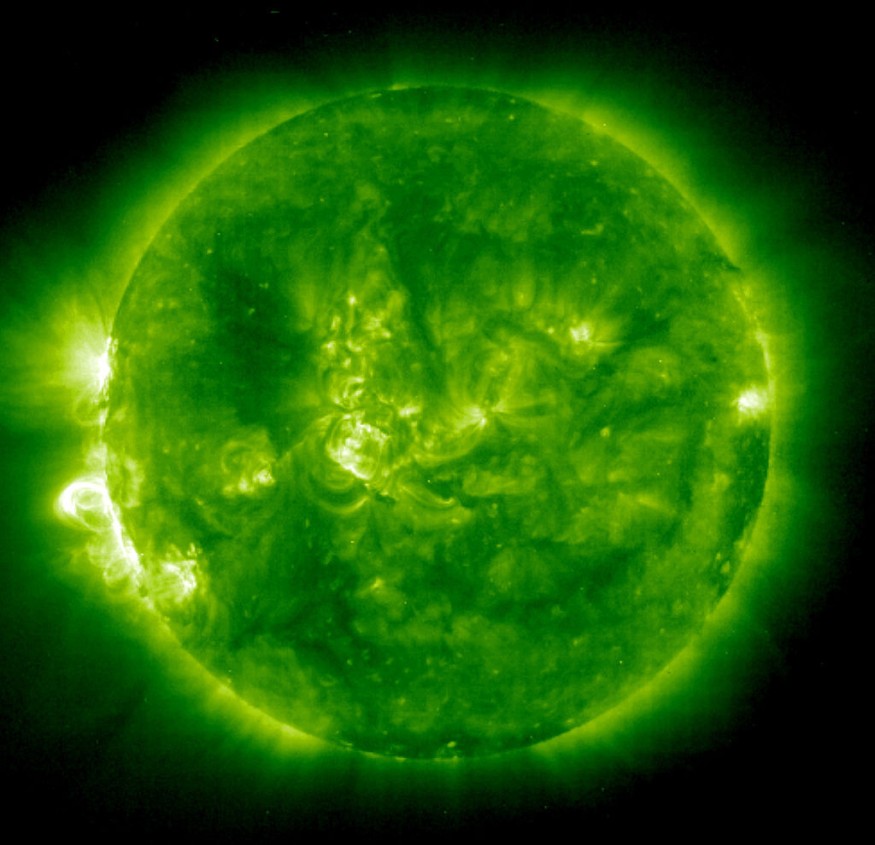Radio blackouts struck Asia and Australia again after more than a week when a restless sunspot emitted a"'double solar flare" on Monday, April 25.
The space weather storm was massive enough to disrupt radio communications, adding to the increased solar activity under the current solar cycle in recorded history.
Increased Solar Activity

Solar activity from the Sun has increased in the past several weeks as part of Solar Cycle 25, emitting solar flares, as per Live Science.
The Sun has also released a number of coronal mass ejections (CME).
Collectively, these types of solar storms have prompted the risk of not only radio blackouts but also solar radiation storms and geomagnetic storms.
Monday's double solar flare came from the sunspot AR2993 region and was emitted in quick succession, as per spaceweather.com.
The eruption was significantly intense as it produced an "overlapping pair" of M1-class solar flares, which were capable of releasing electromagnetic radiation.
Although there was no CME from the solar flare heading for Earth, the duo flares have resulted in a long-lasting radio blackout in Asia and Australia, specifically targeting radio frequencies below 20 megahertz (MHz).
Due to the pattern exhibited by solar activities, further solar flares are likely to continue in the coming days and weeks.
Solar Cycle
Since 1775, astronomers have started the extensive observation and monitoring of sunspot occurrences and other solar activity. The period marked the coinage of the Solar Cycle 1, which lasted for approximately 11 years from February 1755 to June 1766.
During a media event in September 2020, experts from the National Aeronautics and Space Administration (NASA) and the National Oceanic and Atmospheric Administration (NOAA) reportedly acknowledged the start of the Solar Cycle 25 in December 2019.
The astronomical enthusiasts made their analysis and predictions, including how it will impact our lives and technology.
Lika Guhathakurta, a solar scientist at the Heliophysics Division of the NASA headquarters in Washington, reminded us that "solar activity never stops" and that it only changes in form, as per the press release of NASA.
The NASA scientist's statement still holds up to this day, showing that whether it is a solar flare or CME, the Sun will continue to cause these solar explosions from its solar minimum to its solar maximum, wherein the latter is a phase when solar activity is at its highest.
Space Weather Warning
The double solar flare event comes a day after the NOAA's Space Weather Prediction Center (SWPC) on Sunday, April 24, issued a solar storm alert for a potential geomagnetic storm, solar radiation storm, and a radio blackout by Wednesday, April 27.
The space weather phenomenon also transpired exactly two weeks after a so-called "corpse" of a dead sunspot exploded and released a plasma on April 11, causing the emission of a massive CME headed in a direction towards Earth.
Although these solar activities are reportedly not life-threatening to humans and other living life forms, a theoretical massive version of these solar storms may possibly wipe out life on Earth.
So far, solar storms in recorded history are only known for causing significant damage to Earth's radio and satellite technology with no evidence of directly killing a person.
© 2025 NatureWorldNews.com All rights reserved. Do not reproduce without permission.





